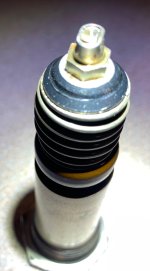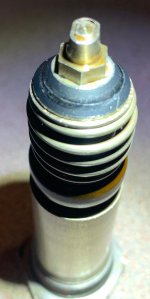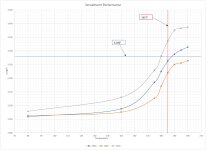Untainted123
Well Known Member
Anyone have a homemade (or not) Vernatherm seat surfacing tool?
I am chasing a high oil temp problem. I replaced my Vernatherm with an (assumed) good one, and my temp problem got way worse. Looking at my old Vernatherm, it looks like it was wearing pretty bad, with a very solid indented ring, and maybe not completely round on the mating wear? I also measured my old Vernatherm at 185*, and it measured correctly right at 3.280 of the spec (at the wear ring).
My engine is an O-360, 1250 hours, in an RV-6. Never had any trouble until all of a sudden the last couple of flights oil was reaching 215* at cruise. Verified gauges and all that already (I have 2, a mechanical old Van's one at the back of the filter adapter, and a JPI in the port on the front oil galley. They agree within 8* of each other, and both are showing hot).
I have purchased the 62415 plunger and 69436 spring to test with, hopefully removing the Vernatherm from the equation for troubleshooting, but in the meantime, has anyone had success honing the seat face?
Here are 2 photos of the old vernatherm, hopefully you can see what I mean about the wear marks. Each photo is 180* rotation.


I am chasing a high oil temp problem. I replaced my Vernatherm with an (assumed) good one, and my temp problem got way worse. Looking at my old Vernatherm, it looks like it was wearing pretty bad, with a very solid indented ring, and maybe not completely round on the mating wear? I also measured my old Vernatherm at 185*, and it measured correctly right at 3.280 of the spec (at the wear ring).
My engine is an O-360, 1250 hours, in an RV-6. Never had any trouble until all of a sudden the last couple of flights oil was reaching 215* at cruise. Verified gauges and all that already (I have 2, a mechanical old Van's one at the back of the filter adapter, and a JPI in the port on the front oil galley. They agree within 8* of each other, and both are showing hot).
I have purchased the 62415 plunger and 69436 spring to test with, hopefully removing the Vernatherm from the equation for troubleshooting, but in the meantime, has anyone had success honing the seat face?
Here are 2 photos of the old vernatherm, hopefully you can see what I mean about the wear marks. Each photo is 180* rotation.







